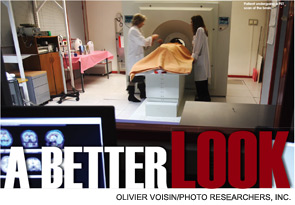
When it comes to treating head and neck tumors, the more information that is available, the better. In the past, options for investigating these types of tumors and their aggressiveness were limited. But advances in optical imaging, positron emission tomography (PET) scanning, magnetic resonance imaging (MRI) and fluorescent and ultrasound imaging have some otolaryngologists excited about the prospect of getting a better look at head and neck cancer.
Explore This Issue
April 2011“I think all of us surgeons are frustrated when we see patients and we treat them with what we think is a very good treatment paradigm only to see them not do as well as we think they should do for reasons that we really don’t understand,” said Mark Wax, MD, professor of otolaryngology-head and neck surgery at Oregon Health and Science University in Portland. “I think all of us are excited by all of the time and all of the research that’s going on that may … allow us to stratify our patients into different treatment paradigms that will decrease their morbidity and increase their chances for good functional outcomes.”
PET/MR
A scanner that combines the molecular imaging of PET and magnetic resonance (MR) was recently approved for commercial use in Europe and is expected to become available soon in the U.S., possibly later this year.
The scanners could become a must-have, used as commonly as PET/CT scans but with added advantages: MR is better at imaging soft tissue and doesn’t involve the radiation of a CT scan. The technology combines the ability of the PET scan to highlight biological processes with the superior structural display of MR technology.
“If you don’t have anatomical co-registration for that (PET scanning), you don’t know whether that’s a normal structure,” said Kurt Zinn, DVM, PhD, director of advanced medical imaging research at the University of Alabama at Birmingham. “You can’t really interpret it unless you have the anatomy together with it.”
PET/MR promises to outperform the PET/CT combo, he said. “Especially in the head and neck area, the MR is much better at imaging of nerves and the brain and those sorts of things, relative to CT,” he added. Dr. Zinn said he expected quick adoption of the technology in the U.S., possibly in 2011, despite the price tag of $4 million to $5 million.
A possible question for PET/MR scanning will be who performs the scans. Physicians certified in nuclear medicine typically perform PET scans but are not trained in MR technology, Dr. Zinn said. Radiologists are trained and certified in both PET and MR and can read both. “There will likely be some turf battles and adjustment until equilibrium is reached,” he said.
Leave a Reply